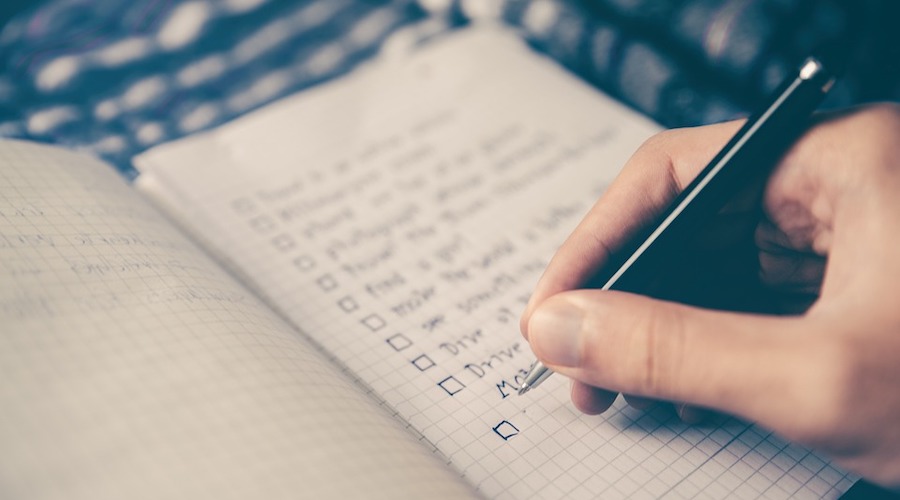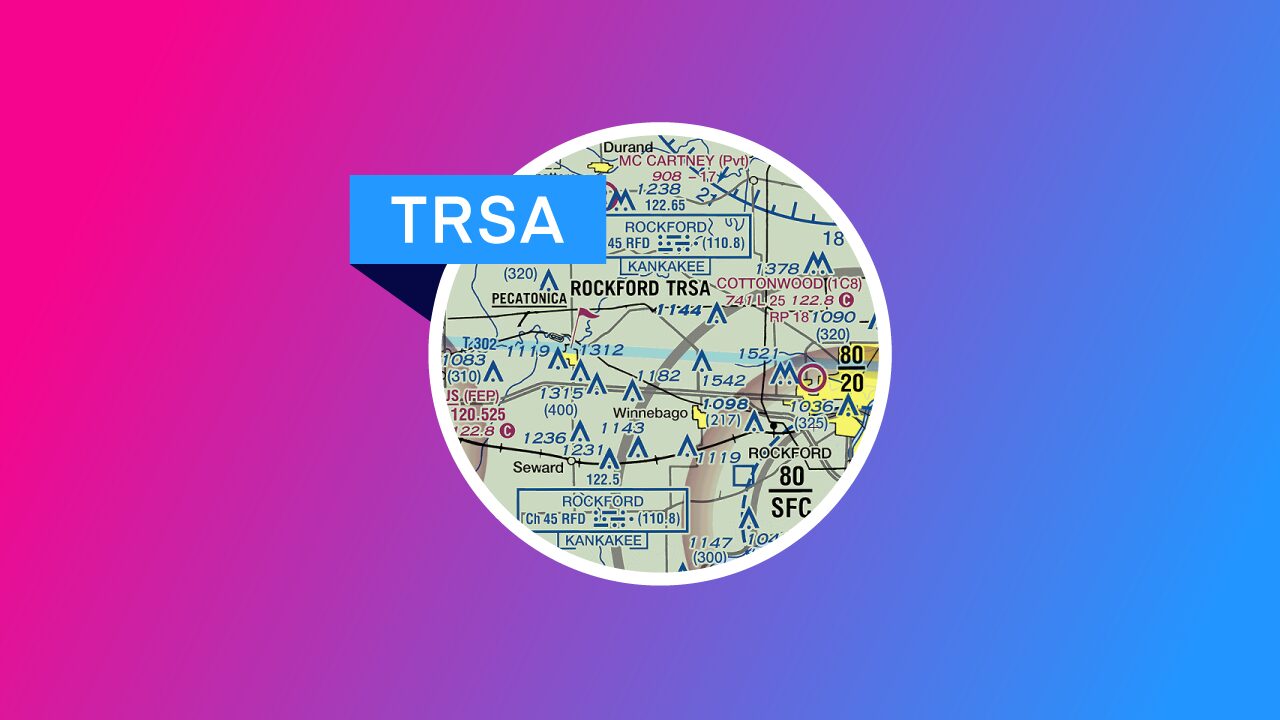-
Personal needs and capabilities
- Decide on your aircraft needs and budget limit.
- Establish Financing
-
Search and short-list
- Aircraft search
- Data collection
- Establish valuations
- Ballpark insurance costs
-
Due diligence
- Inspect and fly the aircraft
-
Initiate the purchase
- Sales contract
- Pre-purchase inspection
- Ensure clear title
- Registration
- Secure all Documentation
- Insurance
-
Conclusion
Deciding to buy an aircraft for the first time immerses you into a complex world requiring myriad decisions and questions. The bewildering process can be stressful, incurring high financial costs if something is missed. In this article, we’ll guide you through the key points to consider, while identifying potential traps to avoid.
There are four main stages to purchasing an aircraft, each with several steps:
Personal needs and capabilities
- Decide on your aircraft needs and budget limit
- Establish financing
Search and short-list
- Aircraft search
- Data collection
- Establish valuations
- Ballpark insurance costs
Due diligence
- Inspect and fly the aircraft
Initiate the purchase
- Sales contract
- Pre-purchase inspection
- Ensure clear title
- Registration
- Insurance
- Secure all documentation
Personal needs and capabilities
When buying any large capital item, there is always tension between what you want and what you can afford. In the personal needs and capability stage, you iterate through both to reach a middle ground that will guide you in your search. I’ve added financing at this stage because if you are borrowing to fund the purchase, it makes sense to get funds pre-approved now. You don’t wish to fall in love with the buy of the century, only to lose it during the inevitable delays in organizing finance.
Decide on your aircraft needs and budget limit.
This stage requires a touch of brutal honesty. Yes, I want a retractable, turbocharged, constant speed instrument platform that cruises close to 200 knots at 20,000 feet also. My budget, however, might stretch to a fixed gear Cessna 182 that was born before I was.
Work out what most of your flying will be and buy to suit that need. If you need something different once or twice a year, plan to hire it. Your budget will thank you for it.
Two, four, or six seats, cruise speed expectations, tricycle or conventional gear, load-carrying requirements, STOL or not, high-wing or low, VFR or IFR, turbocharged or normally aspirated, aerobatic or not. These are the trade-offs you’ll need to make based on the flights you’ll make, your experience, your capabilities, and the license and ratings you hold.
Once you decide on the profile of your ideal aircraft, carve it in stone. I guarantee that in your search, you will see an aircraft or two that offers you far more than you need, seemingly at a price you can afford. Forget it. When you see an aircraft that appears too good to be true, it is.
Unless you are financially blessed, now is the time to see if there are aircraft around at a price you can afford that fits your profile. Get a feel for the prices and create a range. For instance, a Cessna 140 from 1946 sells for between US$27,000 to US$47,000, having a total-time-airframe (TTAF) between 1,800 and 6,000 hours. Does that range work for your finances? Where do you sit? Are you at the bottom of the range or the top?
If that exercise convinces you that you will find what you want at a purchase price you can afford, it’s now time to seek financing.
Establish Financing
You have two options when thinking of financing your aircraft purchase. Traditional lenders like banks offer a range of personal and secured loans, while specialized aviation financiers focus on aviation loans and insurance. Both options will secure the loan against your aircraft. They offer 70 to 100% of the purchase price with terms as long as 25-years.
All will offer a pre-approval process lasting up to 90-days, allowing you to find an aircraft and sign a contract knowing the money is available. Now is the time to get that pre-approval, as it allows you to shop the best terms while addressing any hurdles the financiers throw at you. An internet search will turn up many aviation lenders; however, here are three well-known and respected companies to consider:
LightStream Aircraft Financing
United States Aircraft Financing All have useful lending calculators on their websites and guidance on the documents you need to provide. The process is said to take between one to eight days. Once approved, you can continue with your aircraft search.
Search and short-list
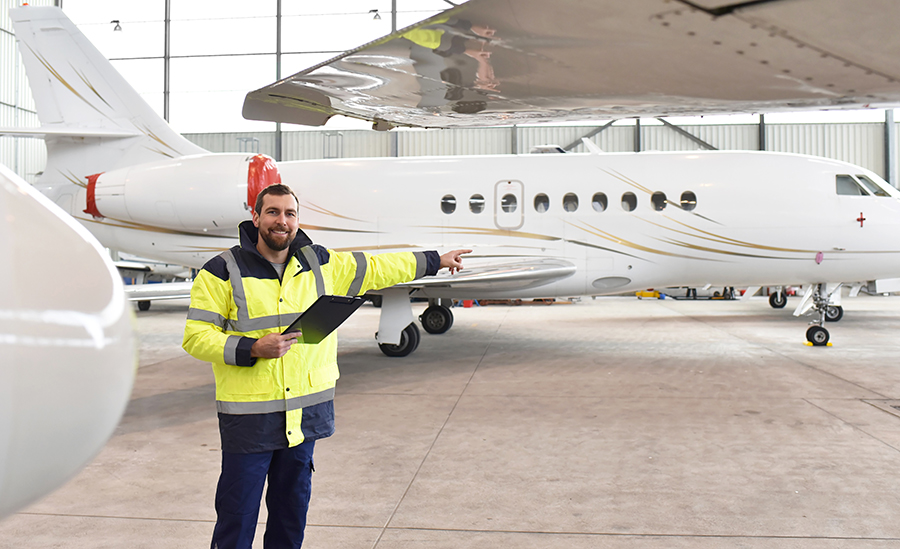
Spreadsheets come in very handy at this stage. You’re looking to capture as much data as possible to rank contenders and reject the unsuitable.
Aircraft search
Start with an online search looking at dealers, aviation trader sites, and private sales. However, don’t confine yourself to the internet; drop into all the local airfields and talk to people, check notice boards, and walk the tie-down lines. If people know you’re seeking to buy an aircraft, I guarantee your phone will ring, or someone will direct you to an owner wishing to sell.
Data collection
Spreadsheet all the likely candidates, capturing as much information as you can from the sales notice or an online search against the registration. As you add aircraft, begin researching each type. The internet is awash with articles, test-flight reports, and owner groups that will begin to flesh out an impression of how this type ranks against another.
Besides looking for aircraft that fit your profile and budget, be sure to record some key data points. Add the following columns to your spreadsheet and begin to fill them in. A few will be in the sales notice, but you will need to ask the owner to supply the rest if you are genuinely interested in the aircraft.
- Price
- How long has the aircraft been for sale
- Total time for the airframe and total time for the engine
- The hours flown in the last 12-months and the 12 months prior
- Time since overhaul for the engine
- Was it only a top overhaul?
- A major overhaul?
- Zero-timed?
- When was the last annual inspection
- When was the last avionics check
- The compression readings for all cylinders, as at what date?
- A list of all airworthiness directives (ADs)
- A statement on current compliance
- A list of major ADs due in the next 12 months
- A complete damage history
By the time you have completed this list, a few aircraft will stand out, and some will have disqualified themselves due to damage, imminent AD costs, high-time engines, or other concerns that have arisen when researching the type. Delete the disqualified aircraft from your spreadsheet and rank the remainder by preference.
Establish valuations
Before you begin inspecting and flying aircraft, there are two more checks to do on the top contenders on your list. The first is to establish the valuation of each aircraft, which will allow comparison with the buyer’s asking price. There are two publications you can turn to for this exercise. The first is the Aircraft Bluebook Price Digest, although the subscription required to use the service is not cheap.
The better option is to sign up as a member with AOPA, which gains you access to the VREF Aircraft Value Reference. While you will only gain access to their most basic aircraft valuations, that will be enough for this stage in the process.
Remember that the figures given are only estimates and could be up to six months out of date; however, they will give you a good feel for where your aircraft of interest sits on price compared to the valuation.
Ballpark insurance costs
While this check may seem premature, insurance cost is often neglected when deciding on an aircraft purchase. The annual insurance can be a deal-breaker when deciding between two different aircraft types that fit your profile.
Let’s use the Cessna 140 and compare its insurance costs to the Piper Colt’s, and assume a prospective owner has 500 total flying hours and 100 hours on taildraggers. The liability and hull cover for the Cessna is between $800 and $1,000 per year. For the Piper, it’s $400 to $600. If the pilot doesn’t meet the experience requirements, the figures rise to 1,500 and $800, respectively.
You’re not looking for quotes yet, just relativity between the various types under consideration. Add this data to your spreadsheet.
Due diligence
By this stage, aim to have short-listed three or four aircraft. These will be the standouts in terms of value for money while fitting your profile. Now’s the time to be contacting the owners.
Inspect and fly the aircraft
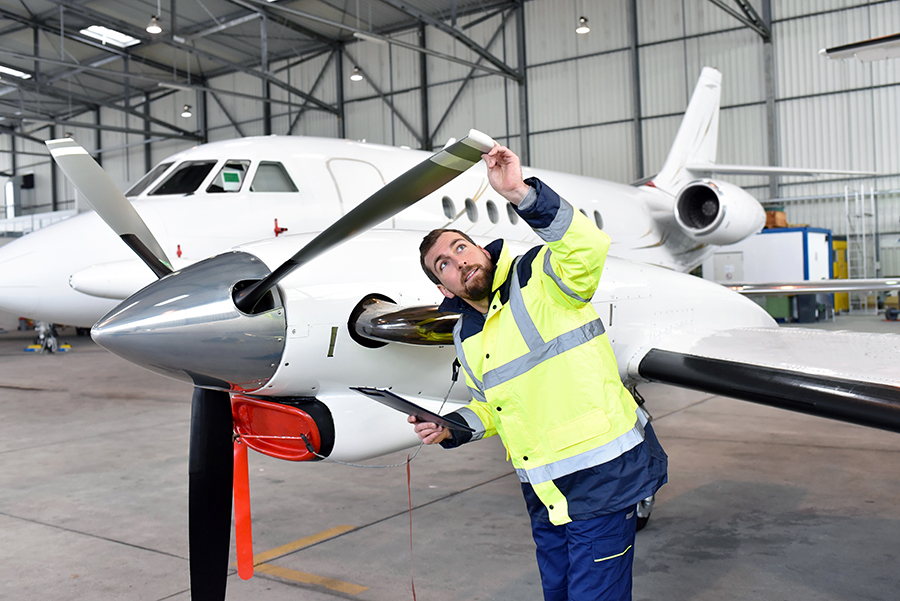
This step is not the time to tear the aircraft apart; rather, it’s a time for first impressions. You will quickly gain a feel for how well the aircraft has been looked after. Note major items of concern, get to know the owner, and quiz them on hourly costs. Print off the data needed for an hourly cost calculator and ask the owner to fill out what they can for you.
Complete a thorough preflight on the aircraft, inside and out. Is there anything that doesn’t gel with the data you’ve been given thus far? Stand back and do asymmetry check from front and back. What repairs do you see, and are there any patches of corrosion obvious? If it’s newly painted, what might that be covering?
Fly the aircraft. Perhaps it’s better to take an instructor with you who has experience in the aircraft type as they can give you an unbiased opinion of the handling of the aircraft.
Initiate the purchase
If you’ve decided on an aircraft that meets your profile and finances, now is the time to begin getting serious and make an offer to the owner.
Sales contract
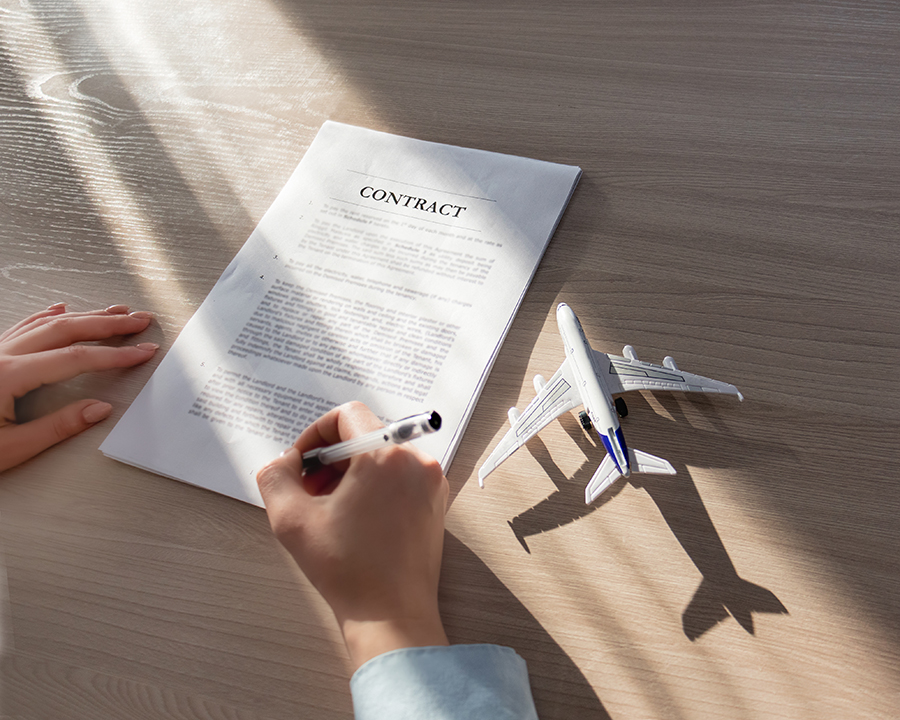
Gone are the days when you shook hands and handed over a check. With so much money at stake, it’s advisable to use a written sales contract. Although it’s advisable, a sales contract doesn’t need to be fancy or drafted by a lawyer. Still, it should detail all agreements, representations, and conditions forming part of the potential deal. Be sure to capture any promises or warranties made by the seller, and list all aircraft documentation you will receive if the sale proceeds.
In the sales contract, be sure to capture important conditional clauses. These clauses will outline the conditions you require to be met before the contract becomes binding. Examples include:
- Finding finance at terms acceptable to you.
- Completing a pre-purchase inspection with results acceptable to you.
- A clear title.
Note the “…at terms acceptable to you…” statements. This statement is an important inclusion because while you may find finance at 25% interest, I’m pretty sure you won’t proceed with the purchase at that rate.
Maybe your mechanic completes a pre-purchase inspection and finds a host of issues that require rectification. Those five words give you the legal right to withdraw from the contract in both cases. Leave those words out, and as soon as you find finance and complete a pre-purchase inspection, the aircraft is yours, whether you like it or not.
Pre-purchase inspection
Use your mechanic or one recommended by a trusted friend for the pre-purchase inspection. Preferably, use the organization you plan will do the regular checks once you purchase the aircraft. This inspection is at your cost, but it can also save you a lot of heartaches.
Have the mechanic list all items of concern and rank them by priority. Get a ballpark idea of the costs and time needed to rectify each. Bear in mind that it’s a second-hand aircraft, and cosmetic items will largely already be accounted for in the price. However, damage, poor repairs, airworthiness items, or service bulletin incorporation can be costly. Armed with this list, you can now negotiate with the owner to lower the price or require them to rectify the items to your satisfaction before the contract becomes unconditional.
Ensure clear title
You must ensure no security agreements, mortgages, or liens are attached to the title before the contract becomes unconditional. While you can do this yourself by searching the Civil Aviation Registry records, I highly recommend using an attorney or an aircraft title search company.
Registration
Use FAA form AC 8050-1 to register the aircraft. However, think carefully about what entity you wish to register the aircraft against before you do. While you can register it as an individual or as a partnership, there are considerable tax and liability advantages to registering an aircraft against a limited liability company. Speak with a legal representative who can guide you on the most appropriate method of ownership.
Secure all Documentation
If all previous issues are resolved to your satisfaction, you are now the proud owner of an aircraft. However, be sure to take receipt of the aircraft documentation listed in the sale contract, including a copy of the sales contract, any lien releases that may have been necessary, the airworthiness certificate, flight manual, and all maintenance documentation.
Insurance
As a final consideration, be sure to advise the insurance company that the aircraft is now yours. The insurers will advise you how they must receive such advice and any further documentation they may require. You need to ensure a seamless transfer of insurance coverage from the previous owner to you.
Conclusion
At first glance, the process can appear quite intimidating. Yet taken slowly and deliberately, it is simply a series of steps you must follow to exercise appropriate due diligence and protect your interests. Above all, exercise patience. Rushing in or getting emotional about one particular aircraft is dangerous. There is always another aircraft; there is also the option to consider airplane kits, and time is very much on your side. Good luck with your purchase.

